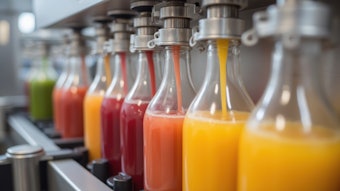
δ-Decalactone (FEMA# 2361, CAS# 705-86-2) has a quintessentially creamy odor and can be seen as a key part of the backbone of most dairy flavors. The series of higher molecular weight δ-lactones from 10 carbon atoms up all have a similar creamy character but steadily diminishing odor intensity. In this respect δ-Decalactone offers by far the best “bang for your buck.”
Unfortunately, the story is not quite that simple. The higher δ-lactones offer better heat stability but, more importantly, they give gradually enhanced taste effects. δ-Decalactone does provide a distinct taste effect but this can be optimized by using it in conjunction with higher δ-lactones. Sometimes the combinations found in nature can be a guide, sometimes it may be advantageous to imagine quite different combinations to give a better effect at lower cost.
Note that the dose rates given throughout this article are the levels suggested for use in flavors intended to be dosed at 0.05% in ready-to-drink beverages or in a simple bouillon.
Dairy Flavors
Butter, fresh: δ-Decalactone probably first came to the attention of flavorists because of its performance in butter flavors. Adding around 4,000 ppm of this ingredient to a core buttery note, such as acetoin, snaps the flavor into focus.
Cheese: The levels of δ-decalactone used in cheese flavors vary but are always much lower than those used in butter flavors. Cheddar cheese flavors are enhanced by additions ranging from 100 ppm to 150 ppm. Blue cheese flavors vary, but 200 ppm is a good starting point.
Cream: All cream flavors—fresh, sour and clotted—are given depth and authenticity by the addition of around 1,000 ppm of this ingredient.
Milk, condensed: Condensed milk and dulce de leche flavors can similarly benefit from levels of 1,000 ppm.
Milk, fresh: Unpasteurized fresh milk has a memorable, subtle flavor. Three hundred ppm of δ-decalactone provides a good foundation to recreate this profile.
Yogurt: The ideal level of addition in yogurt flavors varies dramatically with the style of yogurt. It is best to start off at the low-fat end with around 50 ppm.
For the full article, please check out the Perfumer & Flavorist+ April 2021 issue.










